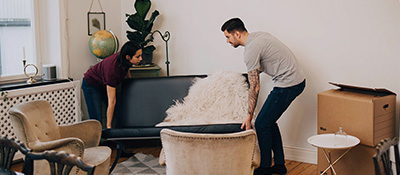A 5-step guide to buying your first home
Buying your first home? We want to help. Here are some tips to help you along the way, starting with seeing how much you can afford to making a final offer – and everything in between.
Step 1: See how much you can afford
The homebuying process starts with knowing the price of homes in your neighbourhood and finding out how much mortgage you can afford. Use our affordability calculator, which also lets you know how much you need to save for your down payment based on the purchase price of your home.
Keep in mind that your mortgage payments are just the beginning. You’ll also need to consider all of the other monthly expenses that come with being a homeowner.
Step 2: Save for your down payment
You’ll need at least 5% of the total home value for a down payment. The bigger the down payment, the less you’ll need to borrow. Your down payment can come from:
- Personal savings
- Monetary gifts from family or friends
- Money from your Registered Retirement Savings Plan (RRSP) – you can withdraw up to $35,000 tax-free under the Home Buyers’ Plan (HBP) to use towards the purchase of your home
Haven’t begun to save yet? It’s easy to get started:
- Create a saving plan to achieve your down payment by your target date
- Set up pre-authorized transfers to a savings account dedicated to your down payment
- If you get a gift, a bonus or find you have extra money, allocate part of that to your down payment savings account – this can help you buy your house sooner or afford a bigger house
Step 3: Order your credit score
Your credit score is a number between 300 to 900 that determines how lenders rate your level of risk when you apply to borrow money. The higher your credit score, the more likely you are to be approved for a mortgage.
It’s a good idea to order your credit report and credit score from one of Canada’s two credit bureaus: Equifax Canada or Transunion Canada. If any information is wrong, contact the credit bureaus to make corrections before you apply for a pre-approval.
Step 4: Get a pre-approval and start shopping for your new home
A pre-approval tells you how much the lender is willing to approve for your mortgage and what your estimated payments will be. It also locks in the current interest rate so you’re protected in case rates increase between the date you’re pre-approved and the date you purchase your home.
Once you know how much mortgage you qualify for, it’s time to start shopping for your first home. You can hire a real estate agent or search for properties in your favourite neighbourhoods.
Keep in mind that your mortgage payments are just the beginning."
Step 5: Make an offer
When you find your dream home, the next step is to make an offer to purchase. In your offer to purchase, you and the seller will decide on a closing date. This is a big day in the homebuying process – and it comes with expenses known as closing costs. As a rule, it’s a good idea to save 4% of the purchase price of your home for closing costs.
Other one-time expenses you may need to pay include:
- Upgrade charges
- Utility set-up costs
- Moving expenses
- Mortgage default insurance
Happy house hunting!


